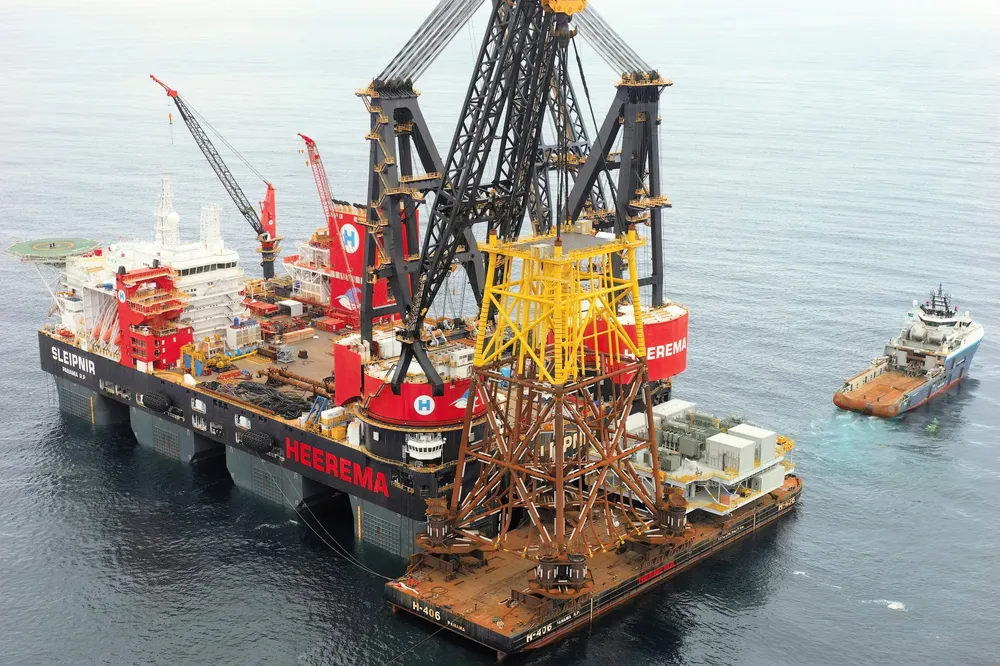Don't let immigration controls spoil our offshore wind party, developer pleads
The largest offshore wind farm under construction in Scotland is humming along, but one topic is keeping the developers awake at night

An increasingly restrictive approach to work permitting and immigration is turning crewing into one of the most worrying pinch-points for the biggest offshore wind farms currently in construction in Scotland.
Owned jointly by Irish utility ESB and China's Red Rock Renewables, the 1.1GW Inch Cape project stands out for reaching a final investment decision in January, even though most of its offtake was awarded in 2022 when the market was a much more benign place for procurement.
While some rival projects fell by the wayside in the face of rising costs — most notably Hornsea 4, for which Orsted cancelled its Contract for Difference earlier this year – Inch Cape got its project financing together and is progressing toward a rapid buildout.
With civil works for the onshore facilities at Cockenzie complete on the east coast of Scotland, including landfall transition, the construction team was this week mobilising for transport and installation of the first of two 85-kilometre subsea export cables, loading out of Blyth, England.
The target is to get the transmission system end-to-end, up and running by January or February and grid-connected in the first quarter of 2026, according to Inch Cape project director John Hill.
Installation of a second 220kV export cable is only scheduled for the spring-summer installation window of 2026
While subsea cables and wind turbines are coming from European suppliers, Inch Cape will get its mix of monopile and jacket foundations from China's Dajin Offshore Heavy Industry and Guangzhou Wenchong Shipyard Heavy Industry.
The installation of monopiles is expected to begin in December, and jacket installation is likely to reach the same milestone in May next year, he adds.
The pin piling campaign for the jacket foundations will use a massive template — diameters go up to 40 metres — currently under construction in Greece.
Hill said Inch Cape is "in the queue" for the 72 V236-15MWVestas wind turbines that will power the project, adding that seeing these big turbines being installed provides an opportunity to observe.
The first turbines were on the Baltic Power offshore wind farm in Poland last month by developers Orlen Group and Northland Power.
"It's good to see the first ones proving the systems for installing these bigger turbines," Hill notes.
New problem for UK offshore wind
Turbine installation is scheduled to begin in 2026, and the wind farm is expected to achieve first power before the end of that year and become commercially operational in 2027.
But there is a cloud on the horizon and Hill, who is upbeat about the progress being made, admited to one key concern.
"Inch Cape was a really tough project to get over the line in technical and economic terms, It came in a timeframe when you saw developers on some other projects basically throwing in the towel, but we did it," he said.
"We were really successful in the project financing and it all came together really well.
"But there are some current challenges, particularly around visas and immigration," he admited.
A tightening of rules dating back to the UK's exit for the European Union has resulted in a situation where a skilled worker visa is required for non-UK crew members, and the rules have been shifting around in a way that troubles developers.
The construction vessels involved in offshore wind projects in UK waters are typically owned by Dutch, Belgian or Norwegian companies, with crewing from diverse countries.
So adapting to the latest UK immigration regulations has emerged as one of the key challenges for the project, Hill relates.
Hill argues that policy-makers needed to think carefully before demanding crew changes on the basis of nationality for such highly specialised vessels.
"Part of this challenge is explaining how specific and unique some of the activities are. These are construction vessels, not cross-channel ferries. Every operation is engineered for two years in advance," he said.
"You need the right skills and the right people in your team."
What is particularly difficult, according to Hill, is the fact that the rules keep changing.
"The rules and regulations on how to get the visa and who can get it have been shifting around quite a lot over the last 12 months. We sign contracts for these vessels years in advance and when they change the rules we have to adapt very quickly to these situations," he said.
Some industry leaders have called for a temporary shortlist of economic activities to be allowed access to more relaxed visa requirements.
The problem that is emerging is a new one.
"We have never faced this problem on a project before," said Hill. "It's a new risk that the whole industry in the marine construction side is having to manage."
The UK Department for Energy Security and Net Zero was approached for comment.
(Copyright)